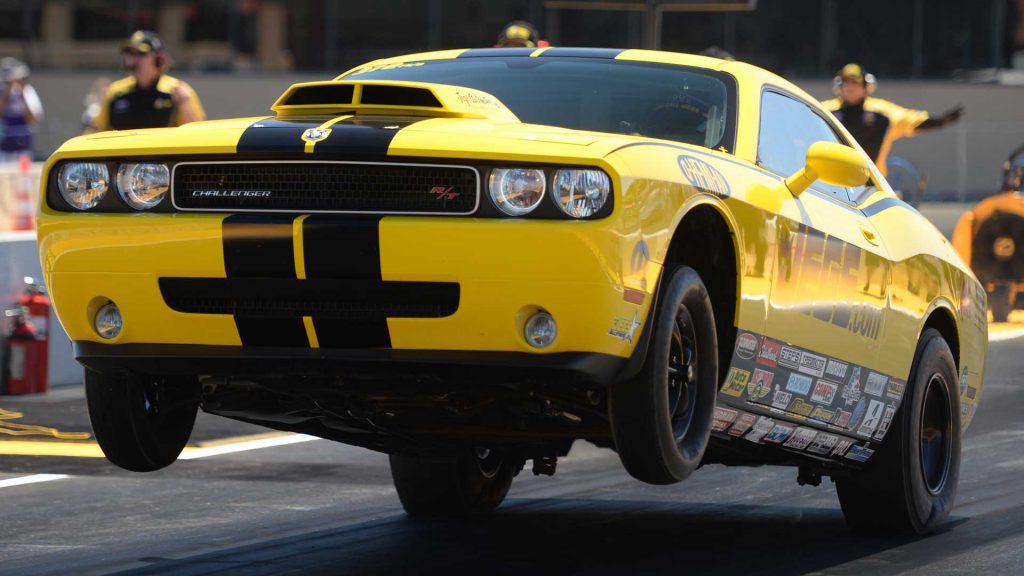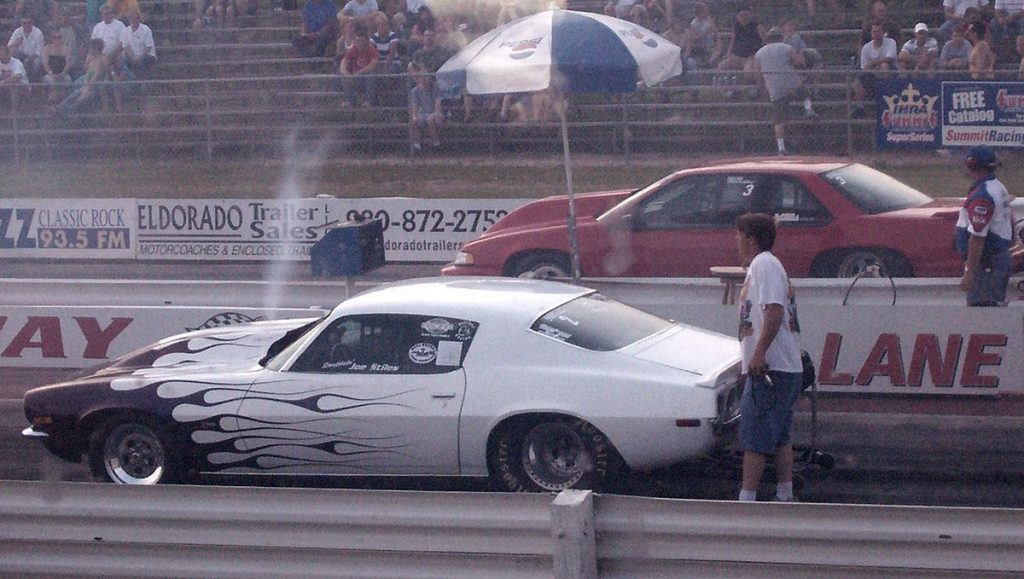Be honest, not every driver goes to race. So if you never have a chance to race, or if you do not know the answer for the question of what is bracket racing, this article is for you. When mentioned about racing or bracket racing, most car owners think it is a kind of dangerous, expensive sport.
However, it is quite an opposite when we go to bracket racing. Without special tools, equipment or a lot of cash, everything racers need to have are a local track, the desire to learn, and a safe car. In this article, our car expert will guide you to the world of racing: what is bracket racing, how a race is set up and run.
Contents
What is Bracket Racing?
In order to make it easy to understand, a bracket drag race is an acceleration competition. Two automobiles will contest by accelerating in a straight-line, usually a quarter-mile or an eighth-mile. These two cars usually start at different times and will record the acceleration speed. For this reason, bracket racing is also called ET racing.

In bracket racing rules, in order to signal the racers lining up on the starting position. After that, an electronic countdown device, also known as a Christmas Tree, will take responsibility. Not only this timer signals and records the elapsed time of each car, it also calculates the time needed to reach the finish line.
How to Set Up a Race
In order to know how to bracket race, you need to set up a race first. There are some essential things that need to be prepared: The track and the tree.
The Track
The track is crucial in every race, since it is the main battlefield for competitors to race. Usually, tracks are a quarter-mile in length. However, some tracks are only eight-mile length, depending on each bracket racing. Let’s take a closer look at the structure of the track:
Burnout Box
This is the area located before the starting line. This area is usually marked and sprayed down with water. The reason for adding water is for racers to warn up the tires by performing a quick burnout. The burnout box can also be used to slicks for better tractions, as well as remove debris lodged inside.
60-Foot Timer
This timer can measure the time when racers cross the first 60 feet of the track, just like its name: 60-Foot Timer. The machine will tell how well the car starts, which affects the elapsed times of the racing car.
660-Foot Timer
The 660-Foot timer shares a similar working function with the 60-Foot timer. The only difference is that it measures the starting time at the quarter-mile track’s halfway point. Depending on the operator, the timer will be positioned differently. Some bracket racings have timers at 60 and 660 foot intervals, while the others have 330 and 1000-foot timers.
Mile-Per-Hour Timer
In many tracks, the timer will not record the speed, in other races, the speed will be calculated and reported. And the best tool for this recording is the mile-per-hour timer, also called the speed line.
The mile-per-hour timer records the average speed of the racing car between it and the finish line. The speed timer is usually located around 66 feet in front of the finish line in order to gain the most accurate result. And if you are wondering what is the number of mile per hour figure on your time slip, then this is it.
Finish Line
What is the point of racing if you don’t have a finish line right? This is the line that stays in the end of the race. However, in the bracket racing 101, the ET clock is also used. When racers finish crossing the light beam at the end of the quarter-mile, the ET clock will be stopped. Car owners can check the ET figure on the time slip to see the activating time of the timer.
Shutdown Area
This is the area behind the finish line for drivers to slow down their cars with the purpose of taking the turnout to the time slip booth. The shutdown area is usually around a quarter-mill in length, sometimes it is even longer. In some situations when drivers cannot stop the car, the shutdown area is set up with a net, sand trap,… in order to prevent a crash.
The Tree
The tree is also known as the Christmas Tree, due to its flashy outlook. It is a collection of vertical lights that provide a visual countdown for drivers. The bracket racing will have the Christmas Tree, along with the lights as following:
Pre-Stage Indicator Lights
The yellow bulbs that tell you that you are close to the starting line. To be more specific, the pre-stage indicator lights are the sign for drivers to be ready to stage.
Stage Indicator Lights
Unlike pre-stage indicator lights, this second set of yellow bulbs tell drivers to be ready to race. When the front wheels cross the light beam coming from a set of photo cells, the stage indicator lights are triggered. And after the car leaves the beam of light, the timer will start to count.
Countdown Lights
There are two types of starts and countdowns: The Full Tree and Pro Tree. The full tree, as well as the .500, start used in the bracket racing flashes one light at a time. While the Pro tree, also known as the .400, is mainly used for professional classes and heads-ups. Long story short, the amber is the sign for drivers to leave the starting line. Depending on your class and car, drivers must notice the top, middle, or last bulb.
Red Light
This is not a favorite light for drivers. When the car breaks the stage beam before the green light is activated, the red light will flash. After that, the driver is automatically disqualified from the race, which means the opponent will have the game. For this reason, in every normal race and bracket racing also, the reaction time is crucial. It is quickly a racer who can drive away from the starting position. Without a doubt, drivers with better reaction time have a huge advantage over your competitors. This is essential especially if you are running the slower car.
SEE MORE
Green Light
When the green light flashes, all the racers need to start moving. And this is what is called the launch.
Running a Bracket Racing
Now we understand how to set up a bracket racing, now it is time to race. But before that, the car driver must determine the “dial” time. Based on our bracket racing 101, the racers have to use time trials with the purpose of calculating the starting time they think their car will run. It is also used in order to figure out an accurate dial, which is crucial for professional racers.

Before ready to race, the dial-ins of two cars will be compared. The faster car will stay the same while the slower one is either given a handicap or a head start. This depends on the difference between the dial-ins. So how can you win in a bracket racing? There are three winning possibilities:
- Run closer to your dial-in than your opponent without breaking out or going quicker.
- If both cars run faster than the dial-ins they gave, the racer that has a closer record to their dial-in wins.
- Your opponent has a red light flashing.
The Time Slip
In order to know your results, car owners will need a piece of paper after making a run, and its name is the time slip. By reading this, racers can determine how quick they went at top speed, elapsed time, as well as many points on the track. It also tells how well you raced, and compared it with your opponent.



